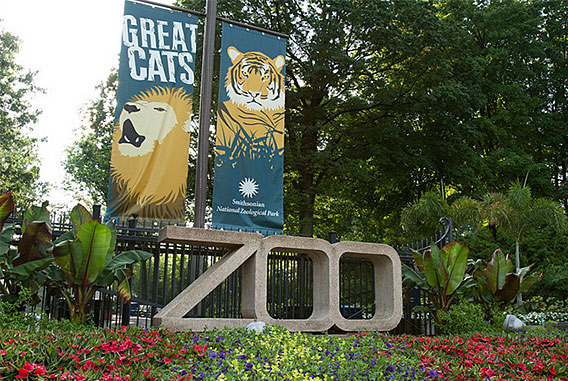Rising Carbon Dioxide May Be Diluting Plant Nutrients, Threatening Herbivores
A new study from researchers at the Smithsonian’s National Zoo and Conservation Biology Institute (NZCBI) warns that as human activities increase carbon dioxide (CO2) levels in the atmosphere, they may decrease the nutrient contents of plants. Declines in nutrient content, known as Nutrient Dilution, may already be harming plant-eating animals and could cause further population declines farther up the ecological chain.
The paper, published today in the journal Trends in Ecology & Evolution, examines evidence for Nutrient Dilution, its causes and its impacts on herbivore populations globally.
“This is yet another major issue caused by humans pumping excess CO2 into the air: Humans’ and natures’ food base being reduced in quality,” said Ellen Welti, an ecologist at the NZCBI and senior author of the study. “Nutrient Dilution should be added to the list of major threats to biodiversity from climate change.”
Today’s atmospheric concentration of CO2 is over 50% higher than prior to the industrial revolution. Because CO2 is an essential ingredient for photosynthesis, the excess CO2 is fueling accelerated plant growth. Unfortunately, the accelerated growth results in plant matter with lower concentrations of nutrients, such as phosphorus, iron and protein.
“The entire plant may have the same total amount of nitrogen whether it’s 2 feet or 10 feet tall, but the nutrient density declines, bite per herbivore bite,” said Michael Kaspari, first author of the study and an ecologist with appointments at NZCBI and the University of Oklahoma. “It’s like transforming a field of kale into a field of iceberg lettuce. There may be more iceberg lettuce in the field, but it’s harder for the herbivore to harvest enough of all its essential nutrients.”
While prior studies examine Nutrient Dilution in agricultural settings, the phenomenon has increasingly been documented in natural systems around the world. The researchers predict that smaller herbivores and those that chew foliage will be most strongly impacted by Nutrient Dilution. Some herbivores, like the aphids that consume plant fluids using piercing-sucking mouth parts, may be less affected because they can compensate by increasing their feeding rates, rapidly eliminating excess sugars while retaining the diluted nutrients. Geographically, the authors predict nutrient dilution will most afflict ecosystems with nutrient-poor soils such as Australia or the Amazon rainforest.
“Many herbivores are already right at the nutritional knife’s edge, where they get just enough from their food to survive,” Welti said. “If the nutrient content of food that is already low decreases, there becomes a point where animals can’t compensate by simply eating more.”
Kaspari and Welti noted several research priorities to fully understand the scope and impact of Nutrient Dilution. More research is needed to examine the mechanisms by which CO2-accelerated plant growth leads to reduced nutrient concentrations. Second, ecologists should target further research on CO2 fertilization in biodiverse, in highly productive, but low-nutrient ecosystems like tropical forests. Third, as herbivore populations are pivotal for functioning ecosystems, researchers must identify the ramifying effects of declines in herbivore populations caused by Nutrient Dilution, including the predators that rely on them for food and the plants that rely on them for pollination.
About the Smithsonian’s National Zoo and Conservation Biology Institute
The Smithsonian’s National Zoo and Conservation Biology Institute (NZCBI) leads the Smithsonian’s global effort to save species, better understand ecosystems and train future generations of conservationists. Its two campuses are home to some of the world’s most critically endangered species. Always free of charge, the Zoo’s 163-acre park in the heart of Washington, D.C., features 2,200 animals representing 400 species and is a popular destination for children and families. At the Conservation Biology Institute’s 3,200-acre campus in Virginia, breeding and veterinary research on 264 animals representing 20 species provide critical data for the management of animals in human care and valuable insights for conservation of wild populations. NZCBI’s more than 300 staff and scientists work in Washington, D.C., Virginia and with partners at field sites across the United States and in more than 30 countries to save wildlife, collaborate with communities and conserve native habitats. NZCBI is a long-standing accredited member of the Association of Zoos and Aquariums.
# # #
SI-214-2024

